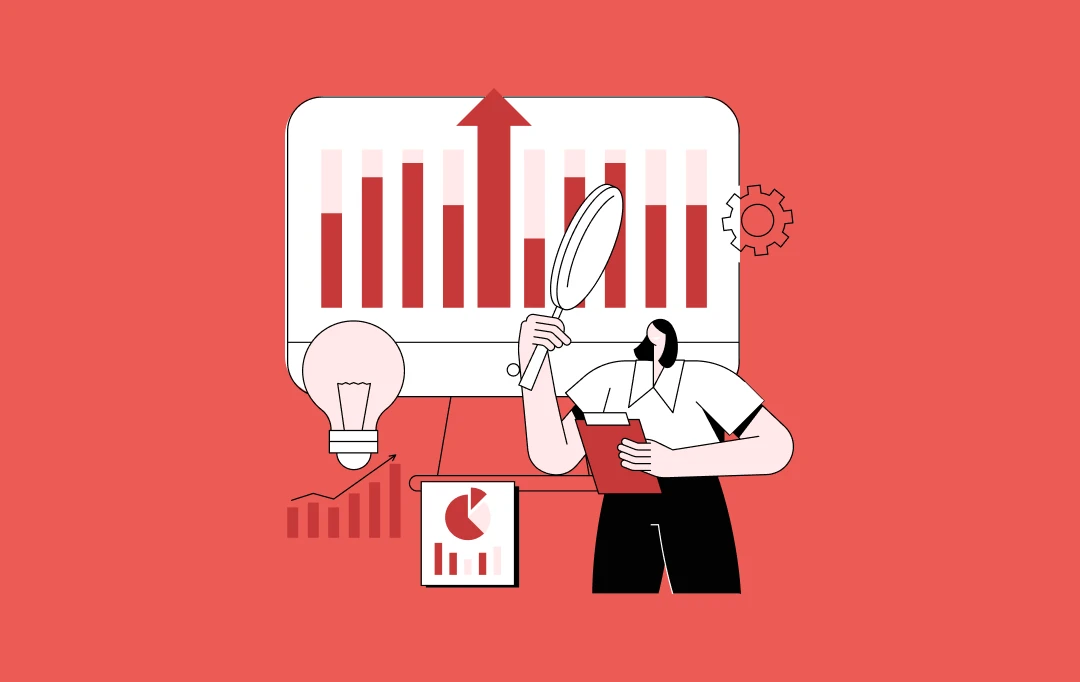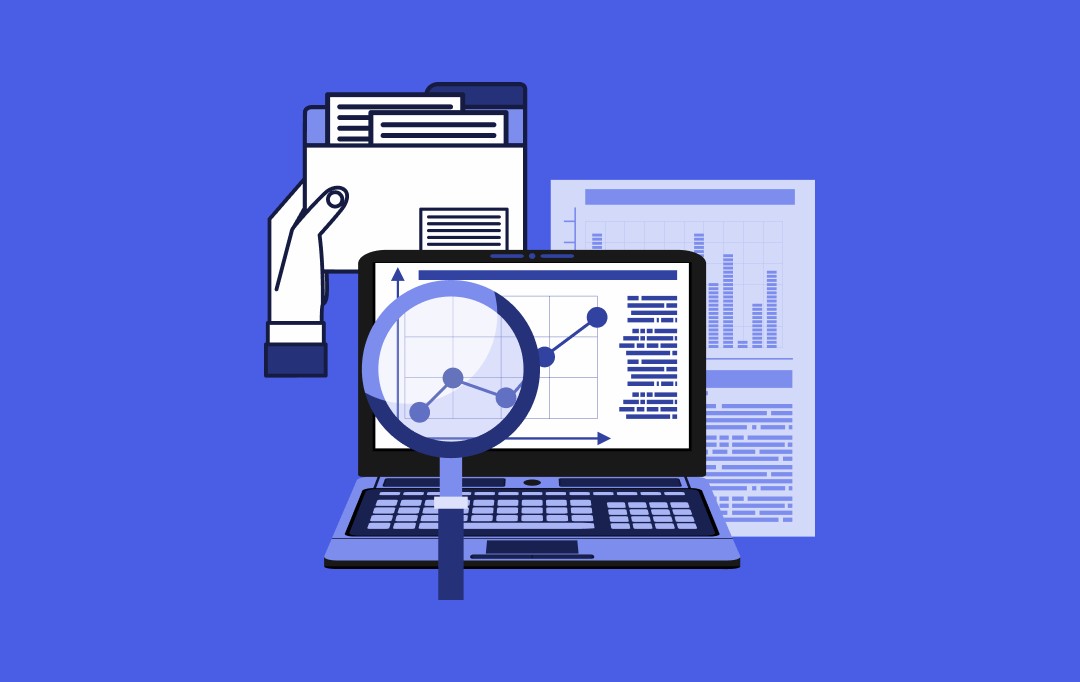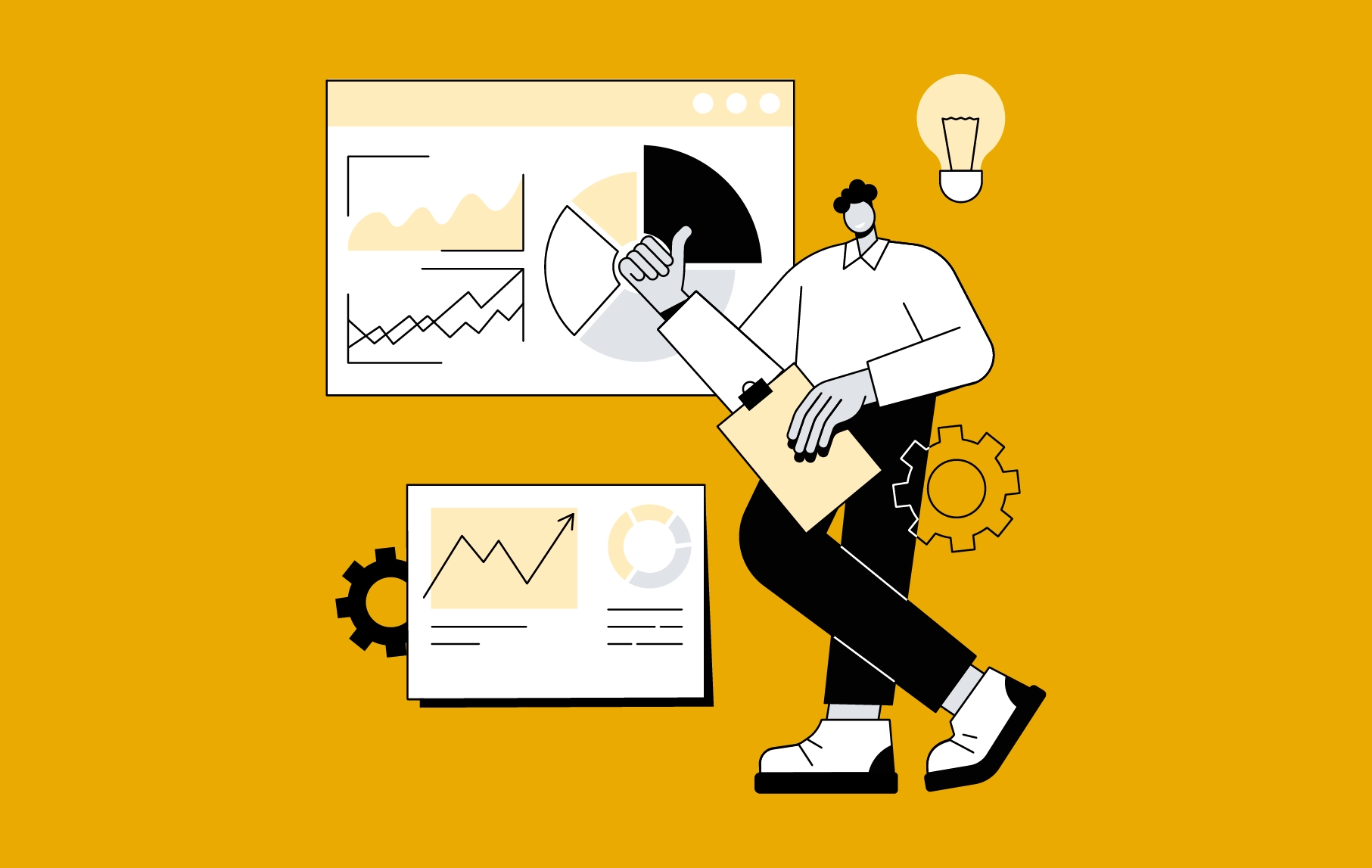Every business owner hopes to look into the future and figure out the best ways to invest capital and resources while working towards their company’s long-term success. This has led to the rise of advanced techniques like predictive analytics in the industry.
Predictive analytics can be applied to the huge amount of data businesses collect each day in order to make valuable predictions about their current or future actions.
It uses sophisticated analytics to assess a project’s success. It further assists you in making decisions by providing intelligent recommendations for potential future actions, all of which are based on your data.
In this article, we will discuss the common myths surrounding predictive analytics, but before we dive into that, let’s see what is predictive analytics and what are its benefits to your business.
What is predictive analytics?
Predictive analytics is the use of historical data, machine learning techniques, and statistical algorithms to identify the likelihood of future events. This could help anticipate customer needs, forecast wider market trends, or manage risks, which offers a competitive advantage and ultimately increases revenue.
As per a Research and Markets’ report, the global predictive analytics market size is said to grow to USD 21.5 billion by 2025 from USD 7.2 billion in 2020, at a CAGR of 24.5%.
Various factors such as increasing use of machine learning and ai development services, acquisitions, and product launches in this market are expected to drive the adoption of predictive analytics software and services.
Now let’s take a look at an example to see how predictive analytics works.
Businesses are faced with a number of decisions every day, and their choices greatly impact the company’s success. So, let’s start with a typical decision faced by most businesses – forecasting sales.
For financial planning, a sales forecast is the first important step. It impacts almost every aspect of your business, such as hiring employees, buying raw materials to manufacture products, handling demand, and more.
Forecasting sales not only involves predicting how much product you’ll sell in an upcoming period but also involves forecasting who will buy, why they will buying, etc. But all these tasks take a significant amount of time, making it hard for you to prioritize resources. But that’s not the case if you use a predictive analytics tool.
A predictive analytics tool can be used for accurate sales forecasts. It predicts future behavior based on past behaviors and combines historical and current data to help you understand what your customers need and why they need it. This, in turn, leads to better user experiences.
Now that we have seen what predictive analytics is, let’s get into the key benefits of predictive analytics for your business.
Why is predictive analytics important?

Predictive analytics helps organizations to detect risks and uncover opportunities by generating actionable insights that can be used to achieve their business goals. So, here are a few key benefits of predictive analytics for your business:
1. Detecting fraud: Combining multiple analytics methods can identify suspicious behaviors and improve pattern detection. As cybersecurity becomes a growing concern, high-performance predictive analytics examines all actions on a network in real-time to spot abnormalities that may indicate fraud, zero-day vulnerabilities, and advanced persistent threats.
2. Improving operations: Many organizations use predictive models to forecast inventory and manage resources. For instance, hotels try to predict the number of guests for any night to maximize occupancy and increase revenue. This helps proactively improve their production processes and take appropriate actions when needed.
3. Forecasting customer churn: Making a churn forecast entails detecting the signals that precede your customers’ cancellation requests and evaluating the likelihood in each case.
You can make use of predictive models to compare data like customers’ satisfaction, service quality, and churn rate to identify which aspects lead to cancellation.
The main idea is to figure out what’s causing the customer’s loss and then reverse the process.
4. Optimizing market campaigns: Using predictive analytics, you can see the whole history of marketing campaigns to forecast better future results. You can determine the most effective language for each target demographic, channels used for marketing campaigns, and other factors influencing consumer acceptability. As a result, when interacting and winning over your audience, you shoot squarely at the objective.
(Also read: 10 Ways Retail Predictive Analytics Can Drive Growth in Business)
5. Customer relationship management (CRM): Predictive models can be used for customer relationship management to understand clients at every stage of their purchasing journey.
With the help of available data, you can build multivariate models and assess the widest range of possible links between purchase histories, behaviors, profiles, interactions, and consumer perceptions.
You can build long-term relationships with customers using customized content, promotions, and offers if you have this key information.
Now that we have looked into the importance of predictive analytics, let’s see a few of its applications in different industries.
Predictive analytics use cases
Industries can use predictive analytics to optimize operations, reduce risks, and increase revenue. Here are a few applications of predictive analytics in real-life scenarios.

Healthcare: Predictive analytics is being incorporated in the healthcare industry for three crucial reasons – risk estimation, geo-mapping, and planning out the what-if scenarios in terms of surgery and patient inflow in the hospital.
Using analytics leads to better patient outcomes, more effective treatments, and cost savings across multiple departments.
For example, a device for asthma patients that uses predictive analytics can record and analyze the breathing sounds of patients and provide real-time feedback using a smartphone app to help patients better manage their symptoms and be prepared for an attack.
E-commerce: Predictive analytics in business helps sellers understand the highest price a customer is ready to pay for their products, analyze the buyer’s behavior, and create personalized product recommendations.
For instance, e-commerce giants like Amazon and eBay are the perfect examples of companies using predictive analytics for their businesses. They use it to monitor customer behavior and current market trends to predict changes and make real-time and data-driven decisions.
[Also Read: How much it costs to build a marketplace app like Amazon?]
On-demand services: In the on-demand economy specific to transport and communication, predictive analytics come in handy in terms of estimating the areas that are going to ask for maximum fleet demand, the price that users are most likely to pay for a tip, the stage at which they are canceling the ride, etc.
Virtual assistants: Combined with the power of deep learning, predictive analytics works wonders when used for virtual assistants. Siri, Ok Google, and Alexa are real-world examples of utilizing the innovative technique in virtual assistants. These assistants learn from the user’s behavior and then deliver accurate results.
Supply chain management: A poorly optimized supply chain can have a deterrent effect on every area of your business. Thus, it becomes vital for enterprises to use advanced technologies like predictive analytics.
The information you gather using predictive analytics will be as up-to-date as possible as it can incorporate real-time data. You can also be more agile in your decision-making process since the model will indicate the impacts of different variables on your supply chain’s efficiency.
Banking and financial services: The financial industry has long embraced predictive analytics for fraud prevention and detection, measuring credit risk, maximizing cross-sell/up-sell opportunities, and retaining valuable customers.
For instance, Commonwealth Bank uses predictive analytics to predict fraud activity or suspicious behavior for any given transaction before it is authorized, within 40 milliseconds of the transaction initiation.
Common myths about predictive analytics

A top-notch predictive analytics model requires far less data, expertise, and effort than you think – and has far more advantages. In this section, we’ll debunk some of its most common myths so that it makes your path towards data-driven decision-making clearer.
1. Predictive analytics is only for large corporations: You might think predictive analytics is intended for use only by large corporations. But the fact is that it can and should be used by both large and small businesses, especially those looking to grow.
Companies that embed predictive analytics in their business tend to be more successful in the long run.
Analytical insights can help identify problem areas in your organization while also providing an accurate idea of customers’ expectations. This gives your company the much-needed competitive advantage in the market.
[Also Read: Predictive Analytics in HR – Benefits, Applications, Challenges and Real Examples]
For instance, analysis of customer retention patterns can provide a valuable foundation for designing targeted promotional offers. Thus, these predictive analytics tools are useful and relevant across all industries.
2. It takes an expert to use predictive analytics: Another common myth of predictive analytics is that it is only for the most seasoned experts. However, valuable predictive analytics tools are now available for anyone and everyone. It might still take some involvement on the part of your company’s most experienced IT staff members to ensure it’s working correctly.
3. Predictive analytics is a perk, not a necessity: Those who are unfamiliar or new to predictive analytics might think of it as a perk, rather than something that ought to come as standard with every big data strategy. The reality could not be farther from the truth.
According to a recent study highlighted in Forbes, 86% of executives who have used predictive analytics report seeing a considerable return on their investment. Moreover, only 13% of those companies consider their use of predictive analytics technology to be highly advanced.
In other words, these predictive technologies are yielding results long before companies have had the time and experience to make full use of them. It’s no wonder that 80% of those surveyed have plans to increase their spending on marketing technologies. Thus, predictive analytics is necessary for every company if they want to grow and increase their productivity.
4. Predictive analytics requires a billion-dollar budget: Years ago, this was true. Implementing predictive analytics models used to be difficult and expensive. But things have started to change. As of today, not all data analytics endeavors require a huge investment. The expense, in fact, depends upon the type of solution selected by the company.
And talking of gaining a tangible benefit, predictive analytics enables companies to make better-informed decisions, thereby maximizing the ROI.
In addition, by making smarter infrastructure choices, companies can prevent predictive analytics costs from ballooning. One way to limit infrastructure costs is by using a public cloud platform to run and store analytics. This limits logistical and storage costs usually incurred due to fragmented data storage units.
5. Predictive models replace human judgment: Predictive models were never meant to replace or dismiss human judgment. In fact, 99% of the time, predictive modeling aims to expand and enhance human expertise in data analysis.
After all, it takes a human to decide what datasets to consider. They use data-driven reports to make smarter decisions based on that data.
6. Predictive analytics provides you with guarantees: Predictive analytics should be a part of every big data strategy, but that doesn’t mean they’re a fortune teller. While it’s true that predictive analytics can much more closely forecast future behavior, no analytics platform can completely eradicate the risk of unpredictable change.
In a piece for the Harvard Business Review, Tom Davenport points out that there are plenty of precautions you should take when utilizing these technologies.
Davenport recommends getting to know the sources of your data and how representative the data is of the population in question. Also, check how many outliers affect the distribution, and most importantly, check the assumptions behind your analysis. Moreover, you should remain aware of all the key variables in your model.
7. Predictive models don’t reveal anything new: Even if you know your data, predictive modeling can still help. A predictive model can do one of two things: confirm what you’ve always believed or bring new insights to light. A predictive model will either turn or confirm the things you thought to be true.
Most of the time, predictive models will both turn and confirm. You’ll both validate any anecdotal evidence you might have, and learn new variables or connections that you hadn’t picked up on before.
Conclusion
Predictive analytics is an advanced analytics approach to peek into your company’s future, allowing you to make better decisions and outperform your competitors.
Organizations can use predictive analytics to take pre-emptive action in a wide range of areas. The technique also makes fraud detection in banking, disaster protection for governments, and magnificent marketing campaigns possible, which is why it will be a tangible asset in the future.
If you want to learn more about what is predictive analytics and successfully establish your product and business, you should consult and hire an experienced software company like Appinventiv.
You should also look out for new data analytics solutions in the market. You may make continual enhancements and gradually expand your application into a newer, better product with the latest features.


Excellence Together

10 Ways Retail Predictive Analytics Drives Growth in Business
Earning customer loyalty and retention is more challenging than ever. With numerous choices at their fingertips, customers have elevated expectations for every interaction with a business. Additionally, the retail industry is experiencing significant financial pressures. Increased operational costs, supply chain disruptions, fierce competition, and rising marketing expenses are all contributing to the strain. Addressing these…

How Data Analytics is Driving Innovation in the Insurance Sector
As the insurance value chain becomes increasingly digital, insurers must swiftly understand and respond to customer needs to maintain a competitive edge. However, they often face challenges such as inaccurate risk assessments, fraud detection, and inefficient customer service. In this situation, insurance data analytics offers a critical solution, enabling insurers to leverage vast data for…











